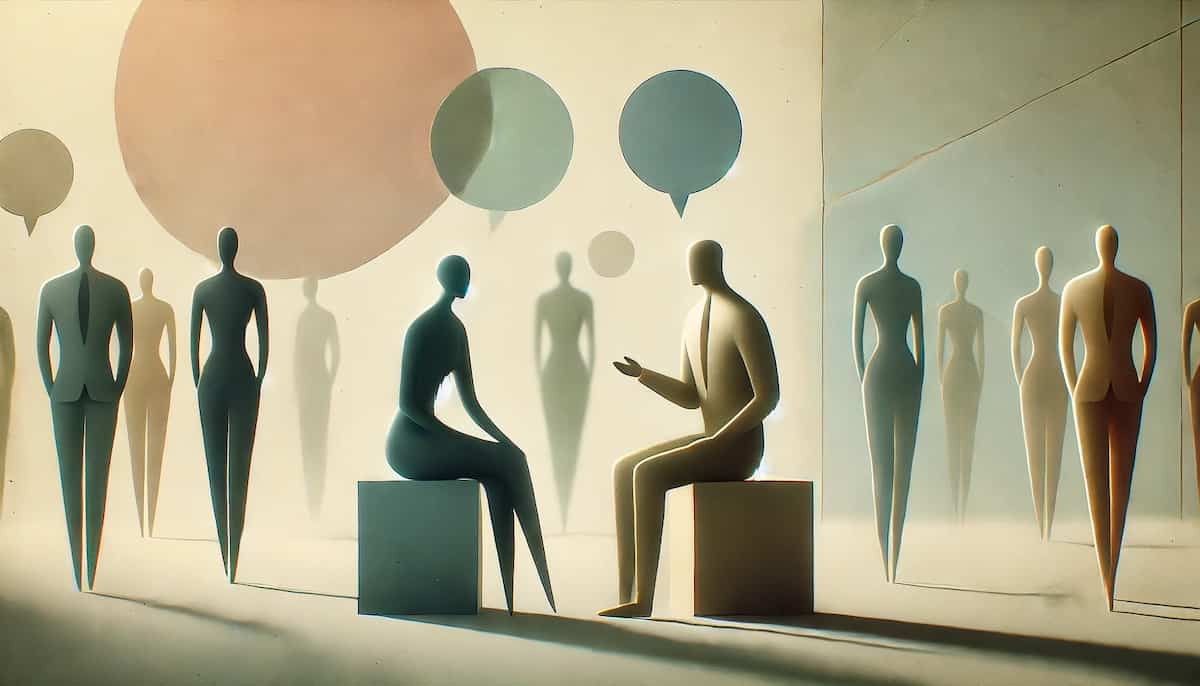The chameleon effect is a fascinating psychological phenomenon where people unconsciously mimic the behaviours, mannerisms, and speech patterns of others.
What is the chameleon effect?
The chameleon effect refers to the natural tendency of individuals to imitate others’ behaviours and gestures without realising it.
This mimicry occurs in social interactions and is often a subconscious attempt to build rapport or align with others emotionally.
Coined by researchers Tanya Chartrand and John Bargh in 1999, the term highlights how subtle changes in behaviour can create stronger social bonds.
Unlike deliberate imitation, the chameleon effect happens spontaneously and is influenced by situational factors and social dynamics.
This phenomenon underscores the deeply social nature of human beings and how we adapt to foster connection.
Key psychological mechanisms
The perception-behaviour link
One of the central mechanisms of the chameleon effect is the perception-behaviour link.
When we observe someone’s actions, our brains unconsciously prepare to replicate those actions.
This automatic mirroring helps us adapt to social environments and fosters mutual understanding.
For example, noticing someone smile might subconsciously prompt you to smile back, even if you were not initially inclined to do so.
This mirroring acts as a social glue, creating a sense of harmony and shared experience between individuals.
The role of mirror neurons
Mirror neurons, specialised brain cells, play a crucial role in this process.
These neurons fire when we observe an action and when we perform the same action, effectively creating a mental simulation.
They contribute to empathy and social cognition, making mimicry a fundamental aspect of human connection.
Research into mirror neurons has also revealed their role in learning, particularly in imitation-based learning during childhood.
This link between observation and action demonstrates the biological foundation of the chameleon effect.
Examples of the chameleon effect
- A customer service representative mimicking a client’s speech patterns to create rapport.
- A person adopting the posture of someone they admire during a conversation.
- Friends laughing in sync or using similar phrases after spending significant time together.
- Colleagues in a meeting subtly mirroring each other’s gestures, such as crossing arms or nodding.
- Actors on stage who unconsciously adjust their timing and movements to align with fellow performers.
These examples highlight how mimicry can happen naturally and strengthen interpersonal connections.
Even in brief interactions, such as speaking with a stranger, mimicry can establish a sense of camaraderie.
Impact on social interactions
Building rapport and trust
The chameleon effect often leads to stronger relationships by fostering a sense of similarity and understanding.
When people feel mirrored, they are more likely to trust and engage positively with the mimicker.
Sales professionals and negotiators frequently use this principle to create a sense of alignment with their clients or counterparts.
In everyday life, being attuned to others’ behaviours can help in reducing conflicts and fostering mutual respect.
Potential drawbacks
While generally beneficial, mimicry can backfire in certain contexts.
Overdoing it or mimicking inappropriate behaviours may lead to awkwardness or mistrust.
For instance, imitating someone’s unique gestures excessively could be perceived as mocking rather than empathetic.
It is essential to strike a balance and remain authentic while engaging in social mimicry.
Applications in various domains
Professional settings
In sales and customer service, understanding and leveraging the chameleon effect can improve client relationships and outcomes.
Therapists and counsellors often use subtle mimicry to create a safe and empathetic environment for their clients.
Leaders in workplaces who mirror their team members’ body language may build a stronger sense of unity and cooperation.
However, professional use of the chameleon effect must be handled delicately to avoid coming across as insincere.
Personal relationships
In personal interactions, mimicry helps build connections, whether in friendships, romantic partnerships, or family dynamics.
Being consciously aware of this phenomenon can enhance your communication skills and relationships.
For example, mirroring a friend’s enthusiasm or adopting a partner’s tone of voice during discussions can create stronger emotional bonds.
Cultural and developmental considerations
Variations across cultures
Different cultures exhibit unique approaches to mimicry, shaped by social norms and communication styles.
For example, some cultures may value overt mimicry, while others might find it intrusive or insincere.
In collectivist societies, where harmony and group cohesion are emphasised, mimicry is often more pronounced and appreciated.
Conversely, in individualistic cultures, overt mimicry might be less common or even discouraged.
Manifestation in children
Children naturally mimic their caregivers and peers as a way to learn social and motor skills.
This developmental aspect underscores the importance of the chameleon effect in early learning and bonding.
By observing and replicating behaviours, children acquire language, emotional expressions, and problem-solving skills.
Neuroscientific insights
Research has identified key brain areas, including the premotor cortex and inferior parietal lobule, as central to mimicry processes.
These regions, along with mirror neurons, facilitate the unconscious replication of observed actions.
Understanding these mechanisms provides deeper insights into how humans connect and interact on a neural level.
Advanced imaging techniques have also shed light on the dynamic interplay between observation and action during mimicry.
Ethical and practical considerations
Ethical implications
While the chameleon effect can be a powerful tool, its misuse raises ethical concerns.
Deliberately mimicking others to manipulate or deceive undermines trust and authenticity.
Ethical use of mimicry should focus on fostering genuine connections and mutual understanding.
Practical strategies
To harness the chameleon effect effectively, aim for subtle and genuine mimicry that enhances connection rather than forcing it.
Practising active listening and being present in conversations will naturally lead to adaptive behaviours.
Building self-awareness about your own mimicry tendencies can also improve your social interactions.
The chameleon effect is a testament to the intricate ways humans connect and adapt in social contexts.
By understanding and applying this phenomenon thoughtfully, you can enhance your interactions while fostering meaningful relationships.
Recognising the balance between natural mimicry and authenticity is key to building trust and rapport in various social settings.

